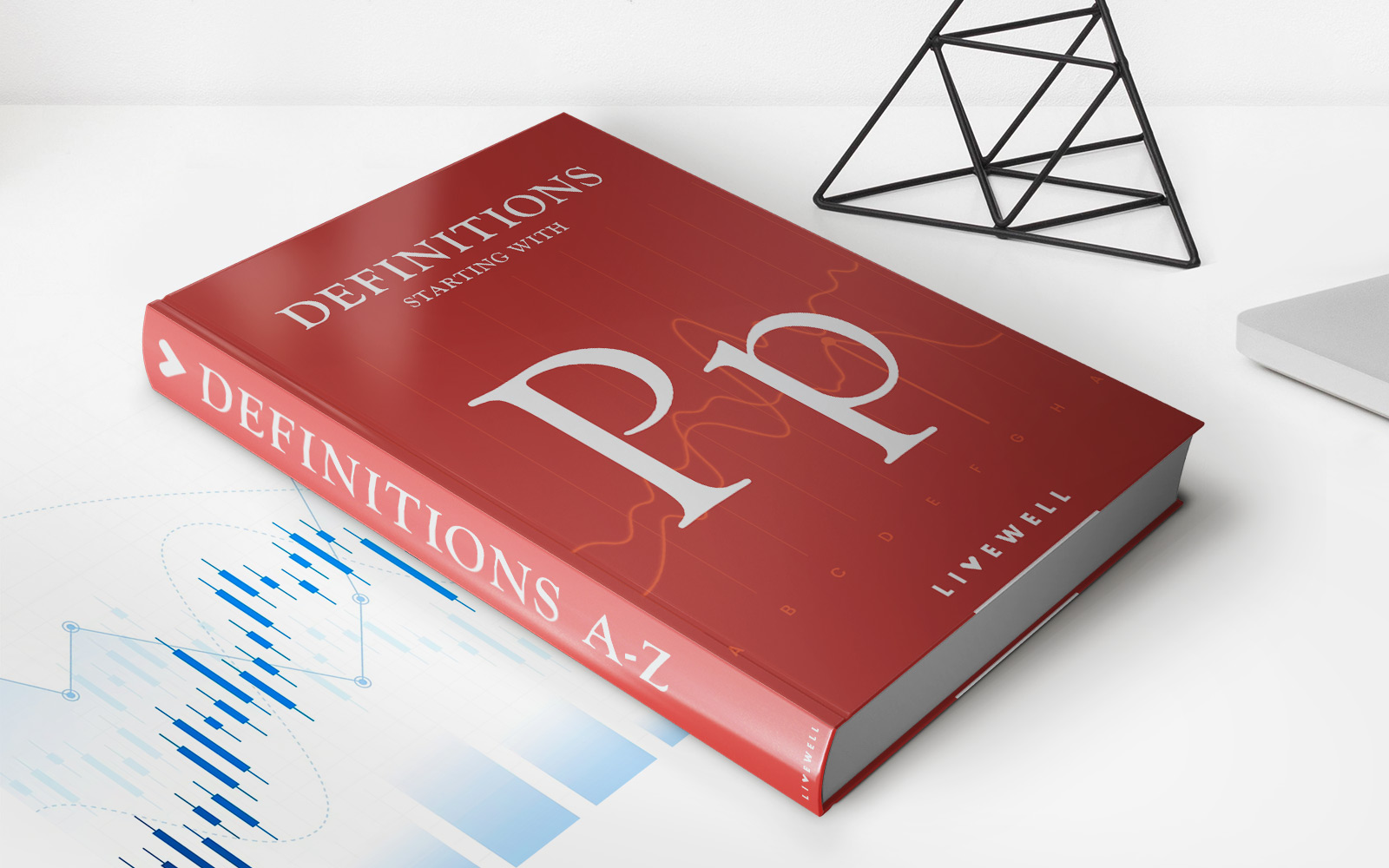

Finance
What Is Funding A Trust
Modified: February 21, 2024
Learn about funding a trust and how it can help with your financial planning. Discover the benefits and strategies to manage your finances effectively.
(Many of the links in this article redirect to a specific reviewed product. Your purchase of these products through affiliate links helps to generate commission for LiveWell, at no extra cost. Learn more)
Table of Contents
Introduction
When it comes to estate planning, one of the most effective and commonly used tools is a trust. A trust is a legal arrangement that allows individuals to transfer their assets to a trustee, who will manage and distribute those assets according to the instructions laid out in the trust document. Trusts offer a range of advantages, including asset protection, privacy, and the ability to control how assets are distributed after death.
However, simply creating a trust is not enough. In order to fully reap the benefits of a trust, it is crucial to fund it properly. Trust funding refers to the process of transferring assets from an individual’s name into the ownership of the trust. This ensures that those assets are properly managed and distributed in accordance with the trust’s terms.
Proper trust funding is essential for the smooth administration of the trust and to avoid potential issues or disputes down the line. In this article, we will explore the importance of funding a trust, the benefits it offers, the types of assets that can be funded into a trust, and how to go about the process.
Whether you are considering creating a trust or already have an existing trust, understanding trust funding is crucial for the successful management of your estate and ensuring your wishes are carried out effectively.
What Is a Trust?
A trust is a legal arrangement that allows individuals (known as the “grantor” or “trustor”) to transfer their assets to a trustee, who holds and manages those assets on behalf of the intended beneficiaries. The trustee is tasked with following the instructions and terms laid out in the trust document regarding the management and distribution of the assets.
Trusts are created for various reasons, such as estate planning, asset protection, providing for minors or individuals with special needs, charitable giving, and more. They offer flexibility and control over the management and distribution of assets, allowing grantors to tailor their wishes to their specific circumstances.
There are various types of trusts, including revocable trusts (also known as living trusts), irrevocable trusts, testamentary trusts, and special needs trusts. Each type of trust serves different purposes and offers different benefits.
A revocable trust, as the name suggests, can be modified or revoked by the grantor during their lifetime. This type of trust enables individuals to maintain control over their assets while avoiding probate, ensuring privacy, and providing for the smooth transition of assets upon their death. On the other hand, an irrevocable trust cannot be easily modified or revoked and is often used for asset protection and estate tax planning purposes.
In summary, a trust is a powerful legal instrument that allows individuals to transfer assets to a trustee, who will manage and distribute those assets according to the instructions and terms of the trust document. It offers flexibility, control, and various benefits for estate planning and asset management.
Purpose of Trust Funding
Trust funding is a crucial step in the estate planning process, as it ensures that the assets intended for the trust are properly transferred into its ownership. This serves several important purposes:
- Asset management: By funding a trust, the assets are no longer in the individual’s name, but in the name of the trust. This allows the trustee to manage and administer the assets in accordance with the instructions and terms specified in the trust document. Whether it’s investing assets, collecting income, or making distributions, proper trust funding ensures that the assets are actively managed and utilized as intended.
- Probate avoidance: One of the key benefits of funding a trust is to avoid the probate process. Probate is the legal procedure through which a court supervises the distribution of assets after a person’s death. By transferring assets to a trust, these assets bypass probate and can be distributed directly to the beneficiaries, saving time, costs, and ensuring privacy.
- Asset protection: Funding a trust can provide an extra layer of protection for assets. Depending on the type of trust, assets held within the trust may be shielded from creditors, lawsuits, or other potential claims. This can be particularly beneficial in protecting assets for future generations or individuals with specific needs.
- Continuity and planning: Trust funding allows for a smooth transition of assets and the implementation of an individual’s long-term plans. By funding a trust, the grantor can ensure that their assets will be managed and distributed according to their wishes even in the event of incapacity or death. This provides peace of mind and ensures that the individual’s goals and objectives for their estate are carried out effectively.
Overall, trust funding plays a vital role in ensuring that the assets are properly managed, protected, and distributed according to the grantor’s wishes. It provides greater control, privacy, and flexibility in estate planning and offers valuable benefits for both the grantor and the intended beneficiaries.
Benefits of Funding a Trust
Funding a trust is a crucial step in the estate planning process, and it offers a range of benefits. Let’s explore some of the key advantages of properly funding a trust:
- Probate avoidance: One of the main benefits of funding a trust is the ability to bypass probate. When assets are held in a trust, they do not go through the probate process. This means that the assets can be distributed directly to the beneficiaries named in the trust, saving time, costs, and ensuring privacy. Avoiding probate can also help prevent potential disputes and delays in the distribution of the assets.
- Privacy protection: Trusts offer a high level of privacy compared to other estate planning options. Unlike a will, which becomes public record during probate, a trust allows for the transfer of assets privately. This means that details about the assets and their distribution remain confidential.
- Asset management: By funding a trust, the grantor can ensure that their assets will be properly managed and utilized. The trustee appointed to oversee the trust is responsible for managing the assets based on the instructions and terms laid out in the trust document. This ensures that the assets are safeguarded and used for the intended purposes, such as providing for the grantor’s loved ones or supporting charitable causes.
- Control and flexibility: Trusts provide the grantor with greater control over how their assets are distributed. Trust documents can be tailored to specific circumstances and include instructions for how and when beneficiaries should receive their inheritance. This level of control allows the grantor to protect assets for future generations, implement specific conditions for distributions, or support individuals with special needs.
- Tax planning: Funding a trust can offer potential tax advantages. For example, certain types of trusts, such as irrevocable life insurance trusts (ILITs), can help minimize estate taxes by removing the value of the life insurance policy from the grantor’s taxable estate. Additionally, charitable trusts can provide tax benefits for individuals looking to support charitable organizations while achieving tax advantages.
- Asset protection: Depending on the type of trust created, funding assets into a trust can provide an additional layer of protection. Assets held within certain irrevocable trusts may be shielded from creditors or lawsuits, helping to safeguard the assets for future generations or specific beneficiaries.
In summary, funding a trust offers numerous benefits, including probate avoidance, privacy protection, effective asset management, control over asset distribution, tax planning opportunities, and asset protection. By properly funding a trust, individuals can have peace of mind knowing that their estate will be handled according to their wishes while providing for their loved ones and ensuring a smooth and efficient transfer of assets.
Types of Assets That Can Be Funded Into a Trust
When it comes to funding a trust, a wide range of assets can be transferred into the ownership of the trust. It is important to carefully consider which assets are suitable for funding into a trust based on their characteristics and the goals of the estate plan. Here are some common types of assets that can be funded into a trust:
- Real Estate: Real property, such as a primary residence, vacation home, rental property, or land, can be transferred into a trust. By funding real estate into a trust, the trust becomes the legal owner of the property, allowing for seamless management and potential avoidance of probate upon the grantor’s death.
- Financial Accounts: Bank accounts, brokerage accounts, certificates of deposit (CDs), and other financial instruments can be funded into a trust. This ensures that these assets are part of the trust estate and can be managed by the trustee in accordance with the trust document.
- Investment Portfolios: Stocks, bonds, mutual funds, and other investment assets can be transferred into a trust. This allows for centralized management of the investment portfolio and ensures that the assets are distributed according to the grantor’s wishes.
- Business Interests: Ownership interests in businesses, including shares of stock or membership interests in limited liability companies (LLCs), can be funded into a trust. This can help facilitate a smooth transition of business ownership and provide for the continued operation of the business in accordance with the grantor’s instructions.
- Life Insurance Policies: Life insurance policies can be held within a trust to facilitate estate planning and provide liquidity for the payment of estate taxes or other expenses. Placing a life insurance policy into an irrevocable life insurance trust (ILIT) can help remove the value of the policy from the grantor’s taxable estate.
- Personal Property: Valuable personal belongings, such as artwork, jewelry, collectibles, and vehicles, can be funded into a trust. This helps ensure that these assets are properly managed and distributed to the intended beneficiaries according to the grantor’s wishes.
- Digital Assets: In today’s digital age, it is important to consider the management of digital assets, such as online accounts, websites, social media profiles, and digital files. These assets can be funded into a trust to ensure their appropriate management and disposition.
It is important to work with an experienced estate planning professional or attorney who can provide guidance on the appropriate funding of assets into a trust based on your specific situation and goals. By funding a diverse range of assets into a trust, you can ensure comprehensive estate planning and optimize the management and distribution of your assets for the benefit of your loved ones.
How to Fund a Trust
Funding a trust involves the process of transferring assets from an individual’s name into the ownership of the trust. While the specific steps may vary depending on the type of assets and the jurisdiction, here is a general guide on how to fund a trust:
- Create the Trust: The first step is to establish the trust by working with an attorney who specializes in estate planning. The attorney will help draft the trust document, which outlines the terms and instructions for the trust.
- Identify Assets: Take an inventory of your assets and determine which ones you want to transfer into the trust. This can include real estate, financial accounts, investment portfolios, business interests, life insurance policies, and personal property.
- Transfer Ownership: Depending on the type of asset, transferring ownership may involve different steps. For real estate, a new deed will need to be prepared and recorded with the appropriate government office. For financial accounts, you may need to contact the financial institution and provide them with the necessary documentation to transfer the account into the trust’s name.
- Update Beneficiary Designations: Review and update the beneficiary designations on life insurance policies, retirement accounts, and other assets that pass outside of probate. Make sure to name the trust as the primary or contingent beneficiary, aligning with your estate planning goals.
- Change Title and Registration: For vehicles, boats, and other titled assets, you will need to change the title or registration to reflect the trust as the new owner. This typically involves contacting the appropriate government agency and providing the necessary documentation.
- Notify Institutions: Inform relevant financial institutions, insurance companies, and other entities about the trust’s existence and provide them with a copy of the trust document as proof. This ensures that they have the updated information and can coordinate with the trustee regarding the management and distribution of the assets.
- Work with Professionals: It is advisable to work with professionals, such as an attorney and a financial advisor, to ensure the proper funding of your trust. They can provide guidance on the specific requirements, assist with the necessary documentation, and help navigate any complexities that may arise.
Keep in mind that funding a trust is an ongoing process. As you acquire new assets or make changes to existing ones, it is important to review and update the funding of the trust accordingly. Regularly monitoring and revisiting the trust’s funding will ensure that your estate plan remains current and aligned with your goals.
It is recommended to consult with a qualified attorney who specializes in estate planning to guide you through the trust funding process to ensure that you comply with legal requirements and make informed decisions based on your unique circumstances.
Common Mistakes to Avoid When Funding a Trust
Funding a trust is a critical aspect of estate planning, but it’s important to approach the process with care and avoid common mistakes that could jeopardize the effectiveness of the trust. Here are some key pitfalls to watch out for:
- Incomplete Funding: One common mistake is failing to transfer or properly retitle assets into the name of the trust. Assets that are not properly funded into the trust may be subject to probate or may not be distributed according to the trust’s terms. It’s crucial to ensure that all intended assets are transferred into the trust’s ownership.
- Forgetting to Update Beneficiary Designations: Many assets, such as life insurance policies and retirement accounts, allow for beneficiary designations. Failing to update these designations and align them with the trust can result in assets passing directly to unintended beneficiaries and not being governed by the trust’s terms.
- Failure to Consider Future Assets: It’s important to anticipate and plan for future assets that may be acquired. Including a provision in the trust document that allows for the automatic inclusion of future assets can help ensure that they are properly funded into the trust without the need for frequent updates.
- Lack of Coordination with Professionals: Proper trust funding often involves working with professionals such as attorneys, financial advisors, and accountants. Failing to seek their guidance and expertise can result in mistakes and missed opportunities. It’s important to involve these professionals throughout the process to ensure that all legal and financial aspects are addressed effectively.
- Incorrect Beneficiary Designations: When naming the trust as a beneficiary, it’s essential to use the correct legal name of the trust. Using an outdated or incorrect name could lead to confusion and unintended consequences. Review beneficiary designations regularly to ensure accuracy.
- Lack of Communication and Documentation: Informing trustees, beneficiaries, and other relevant parties about the existence and details of the trust is crucial. Failing to communicate this information effectively can lead to confusion and disputes. Keep detailed documentation of all trust-related actions and transactions.
- Overlooking Assets Outside the Trust: Trust funding should cover a comprehensive range of assets, but it’s important to identify any assets that may fall outside the trust, such as jointly owned property or assets held in certain types of retirement accounts. These assets may require alternative estate planning strategies to ensure proper distribution.
To avoid these common mistakes, it is recommended to work with an experienced estate planning attorney who can guide you through the trust funding process and ensure that all legal requirements are met. Regularly reviewing and updating the funding of your trust, as well as staying in communication with your professional advisors, will help ensure that your trust remains effective and aligned with your wishes throughout your lifetime.
Reviewing and Updating Trust Funding
Once a trust has been funded, it’s important to periodically review and update the funding to ensure that it remains aligned with your wishes and current circumstances. Regularly reviewing and updating the trust funding can help avoid potential issues and ensure the effective management and distribution of your assets. Here are some key considerations:
- Changes in Assets: As time goes on, your asset portfolio may change. You may acquire new assets, sell existing ones, or change investment holdings. It’s important to regularly assess the composition of your assets and determine if any changes need to be made to the trust’s funding.
- Beneficiary Designations: Review and update beneficiary designations to ensure that they align with your intentions and the trust’s terms. Changes in family circumstances, such as births, deaths, marriages, and divorces, may necessitate updates to beneficiary designations to reflect your current wishes.
- Real Estate: If you purchase or sell real estate, it’s crucial to update the trust’s ownership and titles accordingly. Completing the necessary documentation and recording any changes with the appropriate government office ensures that the trust maintains legal ownership of the property.
- Reviewing Successor Trustees: Periodically review and consider whether the chosen successor trustees are still the best fit for the role. Life circumstances may change, and individuals who were originally selected as successor trustees may no longer be willing or able to assume the responsibilities. Updating this designation can help ensure a smooth transition of trustee duties when necessary.
- Changes in Laws and Regulations: Estate planning laws and regulations can evolve over time. It’s important to stay informed about any changes that may impact the administration of your trust. Regularly consulting with an experienced estate planning attorney can help you stay up-to-date and make any necessary updates to your trust’s funding to remain compliant with current laws.
- Communication with Trustees and Beneficiaries: Regularly communicate with your trustees and beneficiaries to ensure that they are aware of the trust’s existence, their roles, and your wishes. Open lines of communication can help prevent misunderstandings and ensure that everyone is on the same page regarding the trust’s funding and administration.
To ensure that your trust funding remains current and effective, it is advisable to consult with an experienced estate planning attorney. They can guide you through the review process, provide recommendations for updates, and address any legal complexities that may arise.
By regularly reviewing and updating the funding of your trust, you can adapt to changes in your life and ensure that your assets are properly managed and distributed according to your wishes.
Conclusion
Funding a trust is a crucial step in the estate planning process, allowing individuals to transfer their assets into the ownership of a trust for effective management and distribution. By properly funding a trust, you can benefit from probate avoidance, privacy protection, control over asset distribution, asset management, tax planning opportunities, and asset protection.
When funding a trust, it is important to avoid common mistakes such as incomplete funding, forgetting to update beneficiary designations, and lacking coordination with professionals. Regularly reviewing and updating the trust funding is essential to ensure that it remains aligned with your goals and current circumstances. This includes assessing changes in assets, updating beneficiary designations, making necessary changes to real estate ownership, reviewing successor trustees, staying informed about legal changes, and maintaining clear communication with trustees and beneficiaries.
Working with an experienced estate planning attorney and other professionals can provide valuable guidance and ensure that all legal requirements are met throughout the trust funding process. By regularly reviewing and updating your trust funding, you can have peace of mind knowing that your assets will be effectively managed and distributed according to your wishes.
Remember, estate planning is a dynamic and ongoing process. As your life circumstances change and your goals evolve, it is important to revisit and update your trust funding to reflect these changes. By staying proactive and keeping your trust funding up to date, you can ensure that your estate plan remains effective and in line with your wishes, providing for the legacy you desire.














